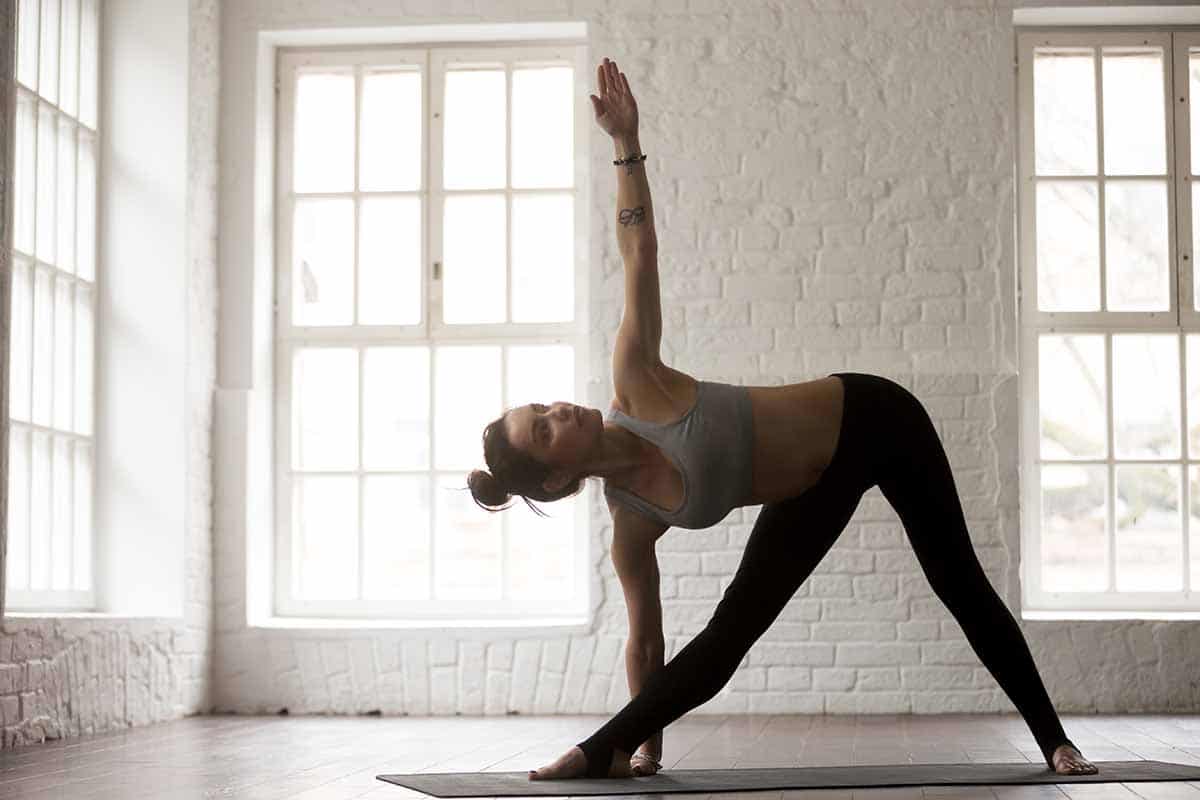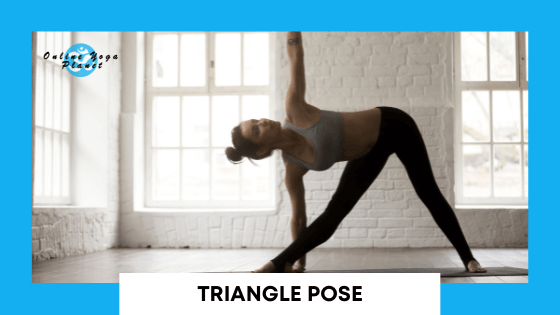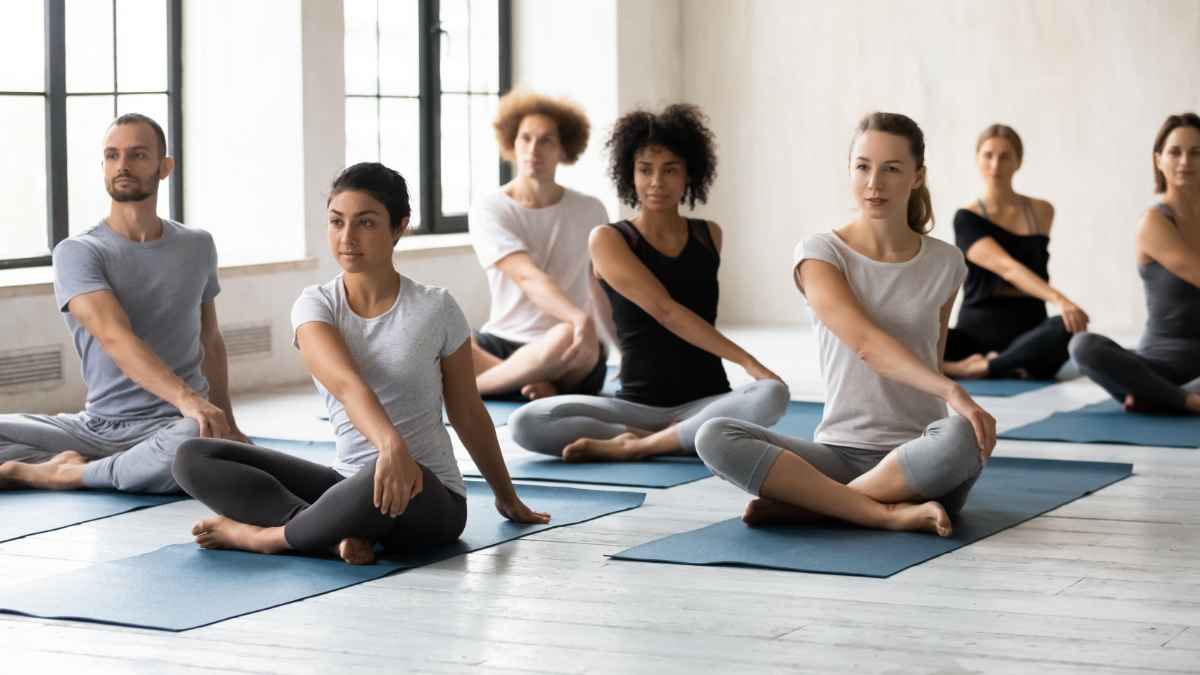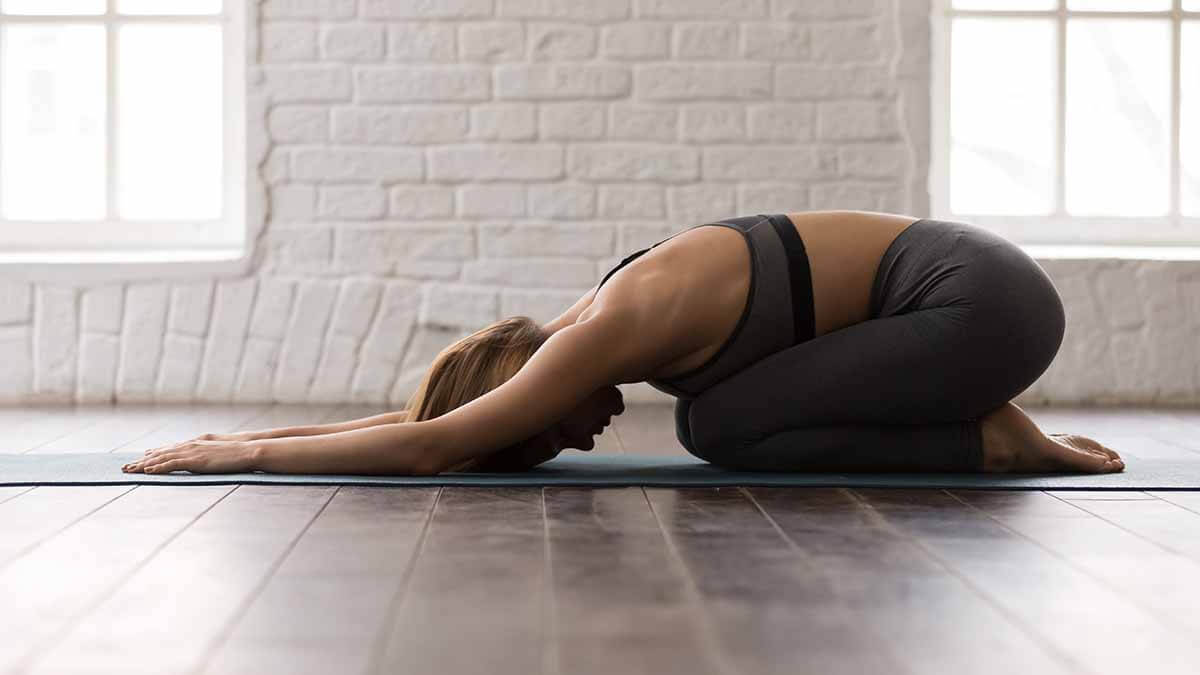
oga is one of the most popular forms of exercise, and many people do it right inside the safety of their homes. If this is you, you might be trying to add as many excellent movements to your regiments as possible. You may have heard of the Triangle Pose. So, what is the Triangle Pose? Is it worth adding to your roster of yoga movements?
Triangle Pose is a standing position in yoga that involves flexibility. It works well to open up and stretch various muscles. It doesn’t involve drastic movement, so that you can do it from anywhere inside your home. It has a lot of benefits, including stress reduction and increased stability.
Read on to learn more about the Triangle Pose and what it can do for you. We will talk more about what it is and the many benefits you can gain from it. There is a lot to learn about this yoga asana. If you like what you learn, you can add the Triangle Pose to your roster of yoga positions that you accomplish right inside the safety of your home.
Article Topics
What is a Triangle Pose in Yoga?
In yoga, as mentioned above, Triangle Pose is a standing pose that strengthens your body in many ways. It’s considered a foundational position that opens up the body to many benefits that come with this slow stretching movement. The number three holds significant meaning in many cultures, and the triangle has three points. Three sides. Three angles.
For many, Triangle Pose can provide relief from varying forms of pain. However, those with back pain or problems should not try Triangle Pose without pre-approval from their doctor. It can cause harm in those who deal with strained muscles in the back region or who have recently undergone surgery. If this is you, a different position may be better.
What is the Sanskrit for Triangle Pose?
In yoga, every position has a Sanskrit name. For Triangle Pose, the Sanskrit name is Trikonasana. This name combines two traditional Sanskrit words – “trikona,” which means triangle, and “asana,” which means pose. The Sanskrit word for Triangle Pose is a very literal version of the English nickname.
The Sanskrit name for Triangle Pose has been around since the 20th century when new asanas were developed and created for students. If you want to learn more about the history of the Triangle Pose and its Sanskrit name, there are plenty of sources online that can help you further. There is lots of information out there.
What is Triangle Pose Good For?
We’ve talked a lot about what the Triangle Pose is, but what is it good for? Whether you are a beginner or an expert, there are lots of things that the Triangle Pose is good for in life. Let’s talk about a few together.
Triangle Pose is ideal for:
- Activating long-forgotten muscles
- Waking up your internal systems
- Opening up your hips and shoulders
You will find that Triangle Pose is excellent for all of these things and more, which we will talk about a little later.
Triangle Pose has many benefits for the body that people of all ages enjoy. So, how do you get into this asana? Can beginners and experts perform it with ease? We will dive into this next, so you can add the Triangle Pose into your routine as soon as possible.
What Are the Steps to Get into Triangle Pose?
Now that we have talked about what Triangle Pose is and what its ideal for, how do you do it? There are a few steps to take on this asana for yourself. It is one of the simpler asanas to handle.
To do Triangle Pose, do the following steps:
- Position yourself: Reach your arms straight out and place your feet shoulder-width apart. Make sure your arms are parallel with the floor.
- Bend: Bend to your side, exhaling as you fold at the hip. Your waist shouldn’t be scrunched.
- Reach: Gently grab your ankle with the hand closest to the ground and reach over your head with the other arm. The reaching arm should be straight.
- Hold: Hold this pose for a brief moment. Counting to at least five should suffice for this movement.
The more you repeat these steps, the easier it will be to slide into Triangle Pose.
You can repeat Triangle Pose as many times as you feel necessary to get the benefits out of the movement. It is easy to do with enough effort, so practice it as much as possible to get it right.

What is the Variation of the Triangle Pose in Yoga?
With yoga asanas, there are always variations of poses. Some variations make the Triangle Pose easier, while others increase the difficulty and make it more of a challenge for the yogi. We will talk about a few variations that you can do if the original Triangle Pose does not work for you.
A few of the most common variations of the Triangle Pose include:
- Extended triangle pose: Rather than grasping your ankle, bring your lower hand to the edge of your toe.
- Reverse triangle pose: Bend the other way, placing your lower hand on your knee rather than the ground.
- Lifted arms triangle pose: Lift both of your arms and hold them parallel to the ground.
You can always test a few out and see if you like them. If not, the classic is always an ideal option.
The Triangle Pose gives you a great stretch, and these variations will do the same. Some will strengthen muscles more than the traditional. It is up to you to pick variations that will work for you.
3 Benefits of Triangle Pose in Yoga
In any yoga asana, some benefits come with the movement if done correctly. We briefly touched on a few of the good things earlier, but now let’s jump further into three of the good things that stand out from the others.
Some of the benefits that come with the Triangle Pose includes:
- Stretching of tightened limbs
- Reduced stress
- Increased balance and stability
There is lots of good from the Triangle Pose, but these three stand out the most.
Now, it’s time to learn a little more about these three benefits. The more you know about Triangle Pose, the better you can determine if this position is the right one for you. Some may find that these benefits are what they are looking for, while others may not like the Triangle Pose. The choice is yours.
It Stretches the Limbs
One of the best things about the Triangle Pose is that it stretches out limbs. The unique positioning of the asana movements allows muscles that rarely get attention to stretch out and relax after a day of work. Whether you are on your feet all day or sitting down, you can rest your tired limbs with the Triangle Pose.
Triangle Pose can assist in stretching the following limbs:
- Back
- Arms
- Glutes
You’ll find these looser and easier to move after completing a full rotation of the Triangle Pose.
Stretching is just one of the great things about this particular yoga position. Next, we will dive into a mental health benefit this action has.
It Reduces Stress
If you’re seeking a yoga asana that can help with stress, the Triangle Pose is the one for you. It may be a shock to some, but this asana can lower stress levels that you accumulate throughout the day. Those who suffer from stress as a result of their day will find Triangle Pose beneficial in their lives.
Triangle Pose can help reduce stress by doing the following:
- Forcing focus: When you perform Triangle Pose, you’re forced to move your attention to the pose. You can’t think about the stress of the day when you’re trying to get your movements correct.
- Improving breathing: This asana forces you to focus on breathing. In and out, in and out. You can bring these techniques into the rest of your life.
- Releasing back tension: The lower back is where many people carry their stress. The Triangle Pose can rid your body of the tension that accumulates thanks to the stress of daily life.
If you get stressed out, ensure you try this asana at least once to see if it helps you calm down.
Since you will be performing this asana inside your house, it can be an excellent relief from the everyday stresses from your work, home, and relationships. Stress reduction is a fantastic benefit that many should consider when deciding if the Triangle Pose is right for them.
It Increases Stability and Balance
Another great thing that the Triangle Pose does is increase stability and balance. The Triangle Pose requires precise movements from the person performing the asana. The more you work on keeping yourself steady, the better your control will become. Your core muscles become better able to hold your body upright when necessary.
Chair Pose also helps with stability and balance by doing the following:
- Strengthening muscles: Triangle Pose will strengthen the muscles you need to balance and stabilize yourself properly.
- Improving thought: Triangle Pose forces you to think about your actions, assisting with stability.
- Forcing concentration: By performing this pose every single day, you will force your mind into a regiment that can improve balance with focus.
The more you do the Chair Pose, the better balance and stability you will find you have.
Those who have lost their balance with age can benefit from the Triangle Pose. Even if your balance is okay, you can utilize the Triangle Pose to strengthen muscles that could weaken over time. Add the Triangle Pose to your regimen for control over your body.
Final Thoughts on Triangle Pose in Yoga
In the yoga world, there are a ton of poses to choose from for your routine. Whether you want to focus on stretching or strength, there is something out there for you. The Triangle Pose is an excellent position that you can do from any room in your home. Its simple movements make it easy to learn no matter your experience level.
We have talked about what this position is, what it is ideal for, and the benefits of taking on the Triangle Pose. Now, it is up to you to decide if this asana is worth adding to your list of yoga poses. If you need something to improve your balance and reduce stress, this is the movement for you. The Triangle Pose is an excellent option for anyone.



